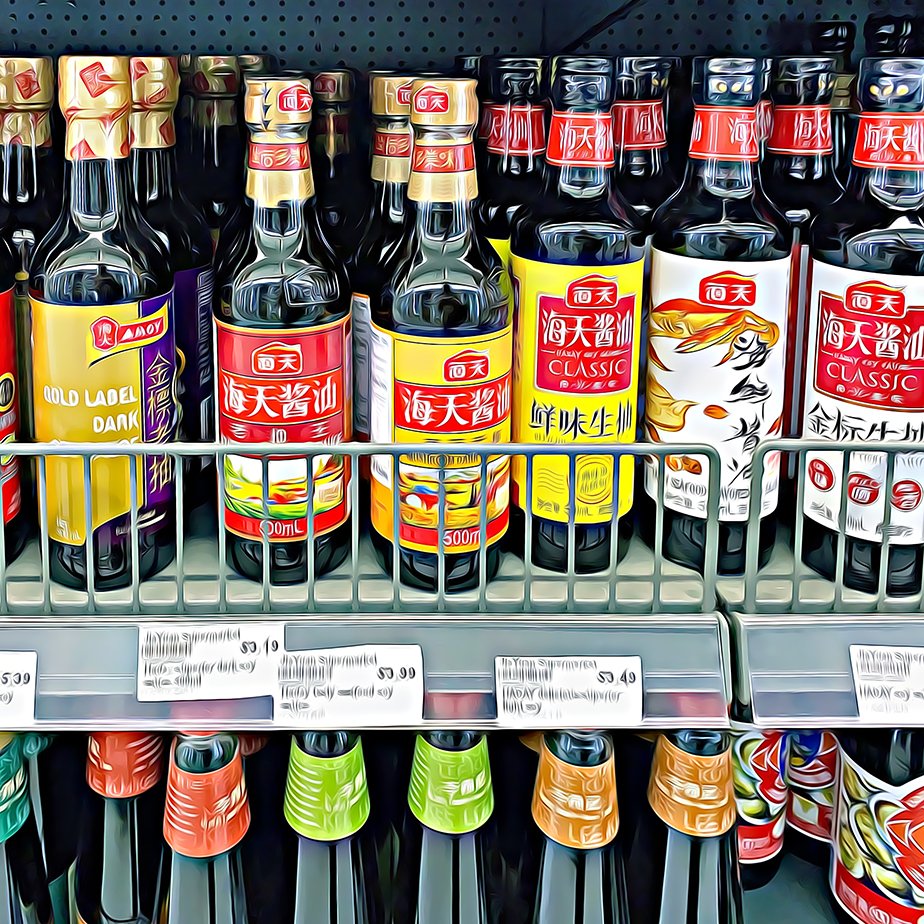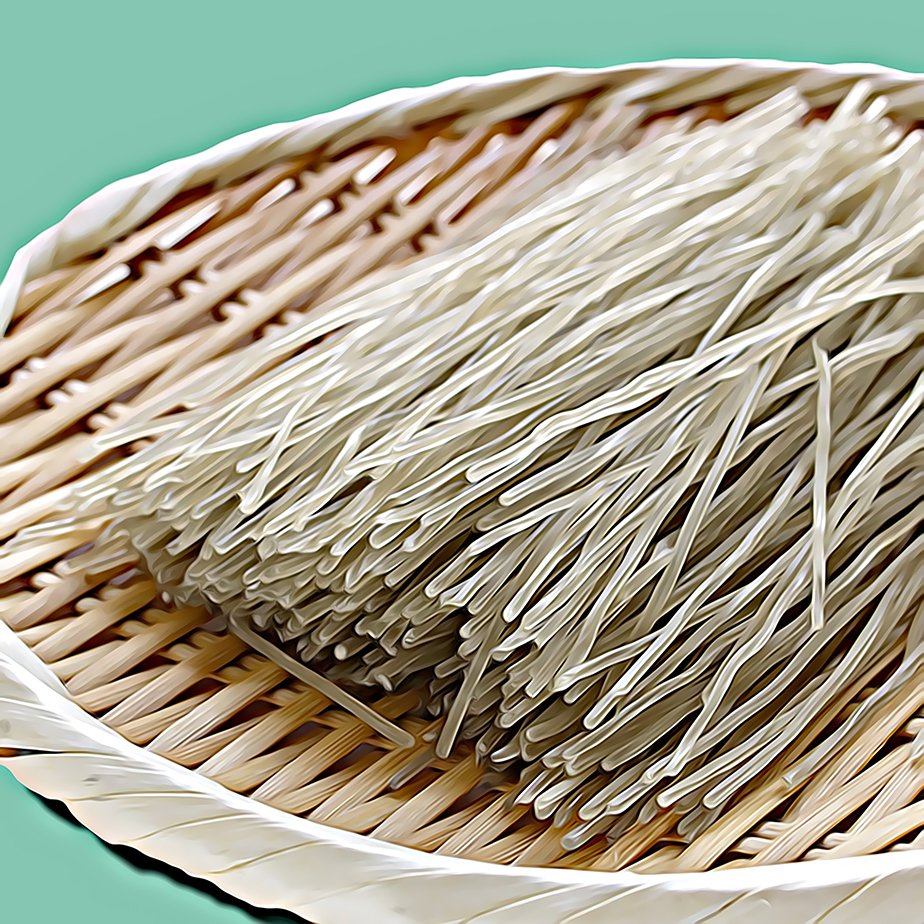Chinese soy sauces
Soy sauce. It’s essential to so many of the cuisines we all know and love… yet how much do we really know about it? With myriad soy sauces Out There, we thought it was as good a time as any to take a deep dive into its brackish, salty, umami-laden depths.
Made from soybeans, the process to make the sauce was invented in China at some point in the Han Dynasty (206 BCE-220 CE), and introduced to Japan around 600 CE. The traditional method involves soaking, then steaming soybeans (often with wheat or other grains like barley). A mould culture is added to start fermentation, creating a mixture akin to a sourdough starter. Called koji in Japanese and also used to make miso, sake and mirin, this combo ferments, breaking down sugars and proteins and building unique flavours as it does its ferment-y thing (again, not unlike sourdough). Some manufacturers have used the same culture for hundreds of years and Kikkoman says theirs is 300 years old!
After a few days, the mixture is transferred into large vats (originally kept in the sun but nowadays in temperature and humidity-controlled rooms) with a brine solution and Lactobacillus bacteria culture; this further breaks down sugars and proteins in a process that can naturally take up to six months. Or even years, in the case of super-expensive soy sauces. During fermentation, the bacterial action forms compounds that give flavour, including glutamic acid which is a major source of those vaunted umami (savoury) notes. It’s during this period that the characteristic dark colour develops. After fermentation, the liquid is pressed out of the solids, which are used as animal feed… and voilà. Soy sauce! Pasteurising kills off any potentially harmful microorganisms and also launches what’s called the Maillard reaction, breaking proteins down into myriad compounds and giving the finished sauce added richness and complexity.
There are many varieties of soy sauce and while they have different characteristics depending on the ingredients, method and where they’re made, they pretty much share the same manufacturing process. Note that for the purist, one should only use Chinese soy for Chinese cooking, Korean soy for Korean dishes, and so on; they really do taste slightly distinct from each other. Here’s our run-down on the Chinese types, complete with characters for your buying ease – thank us later.
In China, soy sauce is called jiàng yóu (酱油) and the two main types are ‘light’ and ‘dark, after the two-pronged approach to cooking with soy sauce that comes from southern Chinese cooking. Outside of southern China, Chinese cooks historically had a catch-all, one-size-fits-all soy sauce that did everything, but the southern habit of using two has gradually caught on.
Typically, Chinese soy sauces contain less grains than Japanese ones. Light Soy Sauce (shēng chōu 生抽) is also called ‘fresh’ soy sauce and is used as an all-purpose seasoning across a range of dishes, as well as being a ubiquitous table condiment. Light soy is what you should reach for as a default when a Chinese-style recipe calls for ‘soy sauce.’
Sometimes light soy is labelled Double Fermented (shuāng huáng 雙璜) which means a batch of light soy has been used as the brine component for a fresh batch of sauce, boosting flavour without affecting the saltiness of the finished product. This type of soy is primarily used for dipping. Confusingly, ‘light’ Japanese soy sauces are heavier and darker than Chinese light soy sauces, but we’ll delve into Japanese sauces at another time. Note that ‘light’ in no way means ‘low sodium’, which is an easy assumption to make.
Seasoned Soy Sauce (zhēngyú chǐyóu 蒸鱼豉油) is light soy with added seasoning (typically MSG), sometimes labelled ‘seasoned for seafood’. That’s because in southern Chinese cooking this sauce is preferred when steaming fish or cooking seafood dishes, as it accentuates the flavour perfectly. Typically it’s added near the end of cooking, as because the subtle flavour can quickly cook out. It’s also used in dipping sauces for seafood.
Dark Soy Sauce (lǎo chōu 老抽) is aged longer than light soy and as a result is thicker, blacker and has a stronger flavour; it does contain more salt but this is balanced by slight sweetness, thanks to a little added sugar. Dark soy is only used in cooking and not as a condiment – it’s often added to dishes near the end of cooking for the colour, depth of flavour, richness and texture it brings. Red-cooked pork, a braised dish and also Chairman Mao’s favourite food ever, is a classic example of a dish cooked using dark soy.
Mushroom Soy Sauce (cǎogū lǎochōu 草菇老抽) is Chinese dark soy infused with straw mushroom extract for an extra hit of umami savouriness; it’s good in braised dishes and goes beautifully with mushrooms, unsurprisingly. Double Black Soy Sauce (shuāng lǎo tóu chōu 双老头抽) is dark soy with molasses added. Mushroom soy can be used interchangeably with regular, dark soy while Double Black is simply a bit sweeter and you can honestly do without it, unless you prefer the flavour.
Purchasing Chinese soy sauces can be confusing, as there’s a variety of naming conventions and production methods across various manufacturers; people tend to be loyal to a brand. Pearl River Bridge is a famous and reliably good brand, producing light, dark and mushroom versions. They also make a premium ‘golden label’ soy, which is slightly more expensive and considered premium. ‘Premium’ sauces come from the first extraction after fermentation, prized for their delicate, refined flavour, they’re also called tóu chōu (頭抽), which translates to ‘first soy sauce.’ Lee Kum Kee makes excellent soy sauces too, including a fantastic double-fermented soy; the American food magazine Cooks Illustrated pronounced Lee Kum Kee the best-tasting soy sauce in a blind taste test, FYI. There are brands that are small-batch and naturally fermented; it’s worth asking at your local Asian grocer about the various soy sauce options on their shelves. Bottom line, you want to look for the words ‘brewed’ or ‘fermented’ on labels and for the ingredient list to include water, soybeans, salt, maybe wheat… and nothing else.
Finally, Thick Soy Sauce (jiàng yóu gāo 醬油膏 ) is a sweet, starch-thickened, paste-like sauce, used in restaurants to give a glazed surface to roasted meats like pork and chicken. To add further confusion, Taiwanese-style Thick Soy Sauce is used as a dipping condiment, or in specific braised dishes.






